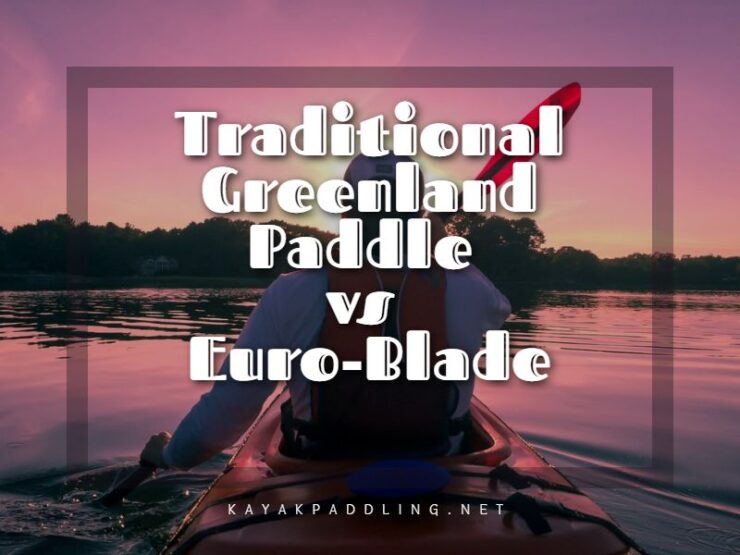Although traditional kayak paddle designs tend to differ slightly from region to region, most can be categorized as belonging to either the Greenland or Aleut paddle styles.
However, while these two traditional kayak paddle styles served their users very well for thousands of years, it is important to keep in mind that indigenous peoples used their kayaks for hunting marine mammals and for fishing rather than for recreational purposes.
Therefore, traditional kayak paddles were specifically designed to provide their users with a high degree of stealth in addition to optimum performance when paddling on the sea. “Euro-blade” paddles on the other hand were designed by the first European whitewater paddlers in order to provide a higher degree of performance in whitewater.
So, in the following article, we will examine the differences between traditional and Euro-blade kayak paddle designs as well as their advantages and disadvantages.
Euro-Blade Kayak Paddles
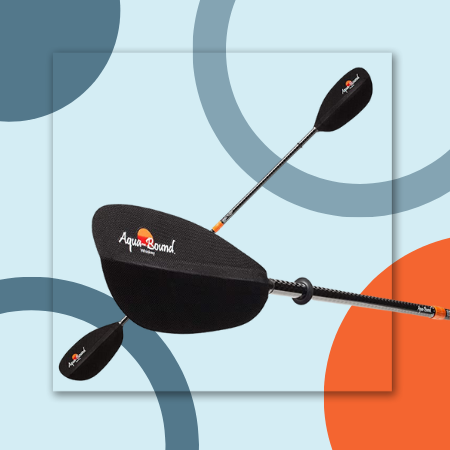
Euro-blade kayak paddles are by far the single most popular kayak paddle design available today and they are available with a wide variety of shaft types, shaft lengths, blade designs, and blade sizes.
However, unlike either Greenland or Aleut kayak paddles, Euro-blade paddles are characterized by relatively long shafts and relatively short, wide, paddle blades. This design, in turn, causes the paddle blade to have more “catch” (the amount of resistance a paddle blade has when used to propel a watercraft).
So, let’s examine the differences between Euro-blade kayak paddles and traditional kayak paddle designs more closely.
Euro-blade paddle shafts
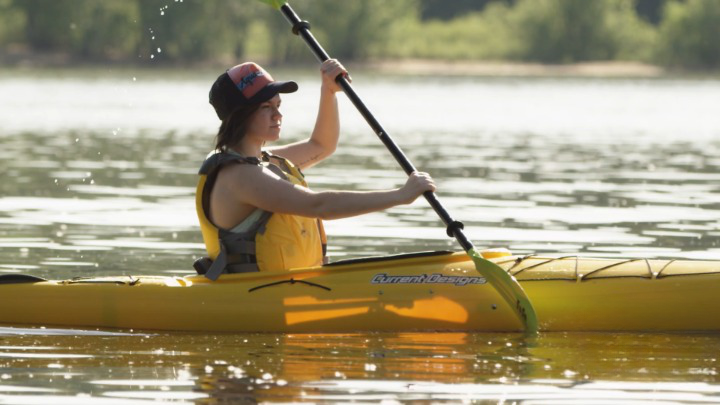
First of all, Euro-blade paddles have relatively long shafts compared to Greenland or Aleut kayak paddles partly because they have short, wide, blades and, partly because they are specifically designed to enable a paddler to spread their hands relatively far apart on the shaft which provides much greater leverage over the paddle blades; thus providing more thrust.
In addition, many brands and models of Euro-blade kayak paddles are available with either straight or bent shafts. However, although Euro-blade kayak paddles with straight shafts are the oldest and most common design, they do not allow the paddle’s shaft to properly align with the paddler’s wrists due to the relatively wide grip used when grasping a Euro-blade kayak paddle.
Therefore, some paddlers find that using a Euro-blade kayak paddle with a straight shaft causes a significant amount of strain on their wrists which can become quite painful after an extended period of paddling.
Therefore, in order to alleviate the stress on a paddler’s wrist caused by using a relatively wide grip on a straight shaft, kayak paddle manufacturers invented the bent-shaft Euro-blade kayak paddle.
This type of paddle shafts differs from straight shafts in that it features two distinct bends in the paddle’s shaft where the paddler places their hands which, in turn, aligns that particular section of the paddle’s shaft to the user’s wrists and thus, eliminates the stress caused by straight shafts.
Euro-blade paddle blades
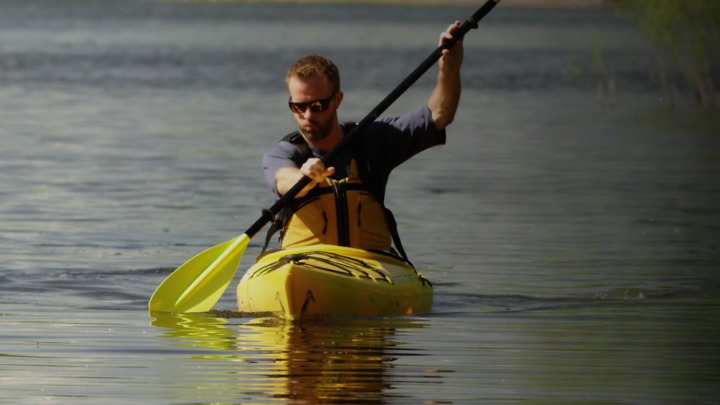
In addition to Euro-blade kayak paddles having significantly longer shafts than either Greenland or Aleut paddles, they also have significantly shorter and wider paddle blades. This feature causes them to have much greater surface area than either Greenland or Aleut paddles which, in turn, causes them to catch more water and thus, create more thrust.
In addition, higher quality Euro-blade paddle blades also have both a spoon shape and a dihedral paddle face which provides significant advantages over flat paddle blades. For instance, spoon-shaped paddle blades catch more water than flat blades do, and thus, they provide more thrust than paddles with flat faces do.
Plus, paddles with dihedral paddle faces cause the paddle to shed water evenly over the surface of the paddle blade which, in turn, prevents the paddle blade from fluttering when it’s drawn through the water.
However, wide paddle blades not only catch more water, but they also catch more wind, and thus, but a strong breeze can also often cause the paddler to lose their grip on the side of the paddle shaft that is raised during the paddle stroke and, can even cause a kayaker to unexpectedly capsize.
Therefore, single-piece Euro-blade kayak paddles usually have one blade fixed at a 30 to 45 degree angle to the opposite blade while two-piece and four-piece kayak paddles usually provide the paddler with the option of aligning the paddle faces or “feathering” them in order to prevent them from being forced out of their grip by a strong wind.
But, feathering also requires the paddler to rotate the paddle with each stroke in order to properly align the paddle blade which is not only fatiguing, it could theoretically lead to the paddler developing carpel tunnel syndrome.
Traditional Kayak Paddles
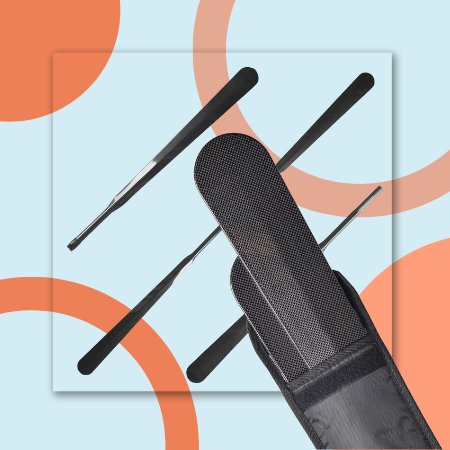
Although traditional kayak paddles are not as popular as Euro-blade paddles are, those paddlers who use traditional kayak paddles generally do so because they feel that traditional kayak paddle designs are superior to Euro-blade paddle designs.
However, this is not surprising when you consider that the indigenous peoples of the Pacific Northwest, the Canadian Maritime, and Greenland have all had thousands of years to experiment with, and refine their kayak paddle designs.
So, what characteristics define Greenland and Aleut kayak paddles and, why do the paddlers who use them feel that they are superior? Well, unlike Euro-blade kayak paddles, Greenland and Aleut kayak paddles are characterized by relatively short looms (aka shafts) and relatively long, narrow, blades.
Thus, while traditional kayak paddle designs do not provide as much thrust as a Euro-blade paddle does, they are much easier to hold onto in a strong breeze or wind and, because they provide less catch, they also require less energy from the paddler.
Traditional paddle looms
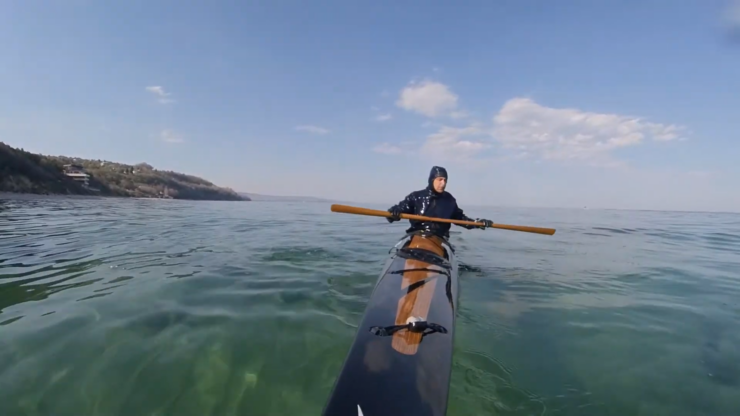
Both Greenland and Aleut kayak paddles are purposely designed with much shorter looms than Euro-blade kayak paddles because the longer blades require a shorter.
However, this also enables a paddler to keep their hands relatively close together when grasping the paddle which helps to prevent shoulder dislocation when high bracing and rolling. However, the narrow hand position also provides the paddler with less leverage over the paddle’s blade.
In addition, due to the relatively short looms and narrow blades featured on both Greenland and Aleut kayak paddles, the paddler’s hands are not forced into a single position the way they are with a Euro-blade paddle. Therefore, the paddler is able to easily move their hands across the entire length of the paddle in order to extend it for bracing, sculling, or rolling.
Traditional paddle blades
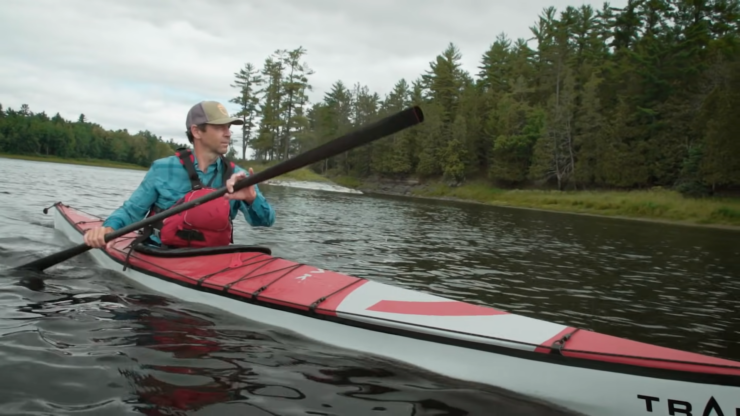
As mentioned above, wide paddle blades such as those featured on Euro-blade kayak paddles are notorious for catching the wind as well as water and thus, being unexpectedly ripped out of a paddler’s hand or, causing them to capsize.
Therefore, both Greenland and Aleut kayak paddles are purposely designed with relatively narrow blades in order to prevent this from happening. Consequently, traditional kayak paddles do not require feathering which prevents wear and tear on the paddler’s wrist.
However, while both Greenland and Aleut paddle blades appear similar in size and shape, they do differ somewhat. For instance, Greenland kayak paddles generally have more narrow blades and, they also have a curved face on both sides of each paddle blade which enables a paddler to use either side of the paddle.
On the other hand, Aleut kayak paddles usually have somewhat wider blades than Greenland paddles do and thus, they also have a distinct central rib that runs the entire length of each paddle blade on one side only which acts as a dihedral to prevent the paddle from fluttering.
Last, Greenland paddle blades generally have rounded ends which enable a paddler to cup the end of the paddle in their hand when high bracing and rolling for greater control and greater comfort. Aleut paddles however generally have pointed ends which can make them uncomfortable when cupping the end of the paddle in the paddler’s hand. Click here to learn more about Greenland paddles
So, as you can see, both Euro-blade and traditional kayak paddles have both advantages and disadvantages which should be carefully considered when choosing a kayak paddle because your paddle is the single most important kayak accessory you can purchase.
Therefore, before purchasing any kayak paddle, you should take the time to search out an outfitter who will allow you to demonstrate both euro-blade and traditional kayak paddles while paddling your kayak in order to determine which type of kayak paddle you prefer.
Check out some other paddles from Amazon also:
Adelaide Gentry, a seasoned kayaking enthusiast and expert, is the driving force behind KayakPaddling.net. With over a decade of experience navigating the world’s most challenging waterways, Adelaide combines her passion for adventure with a deep knowledge of kayaking to provide insightful and practical guidance for paddlers of all levels.
Related Posts:
- 10 Best Inflatable Kayak 2025 - Rivers, Lakes & Open Seas
- 16 Best Kayak For Beginners 2025 - Kayaking Adventure Gear
- 12 Best Motorized Kayak 2025 - Start Your Aquatic Adventure!
- 13 Best Fishing Kayak Under $500 in 2025 -…
- 10 Best Duck Hunting Kayak in 2025 - Navigating the Wild
- 13 Best Kayak Covers 2025 - Keep Your Kayak Safe and Sound

